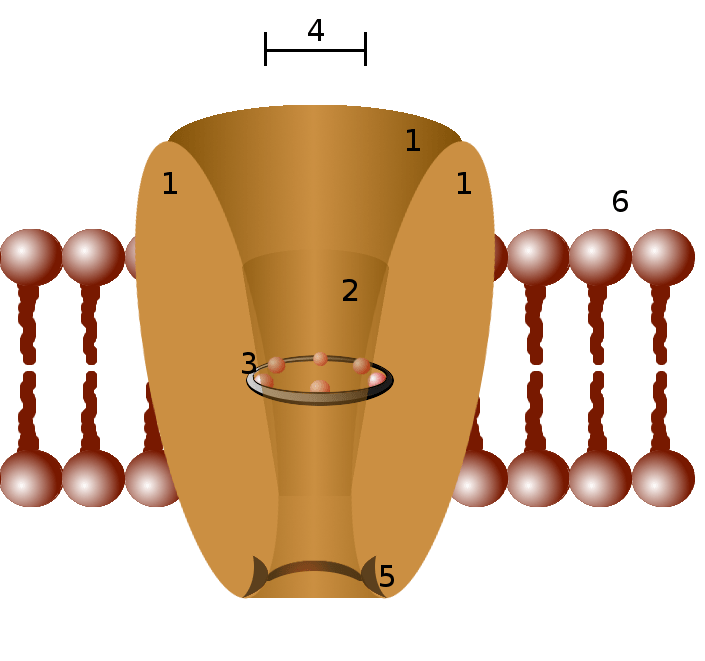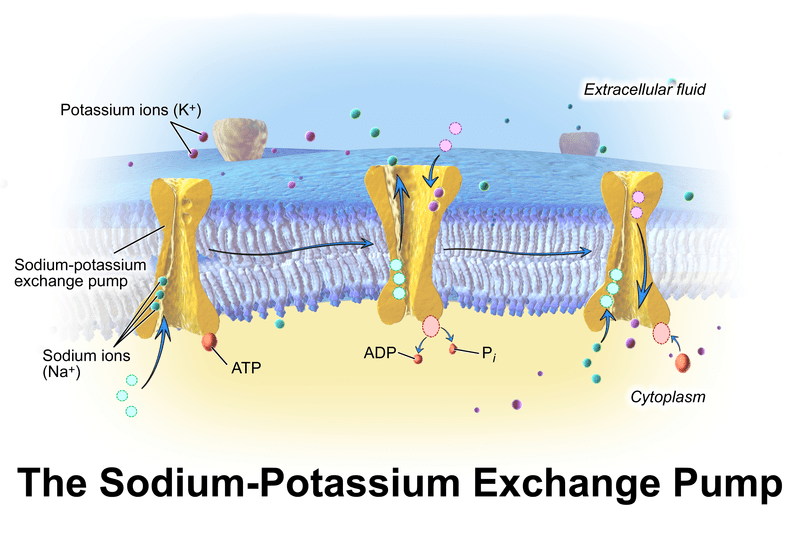Key Difference – Ion Channel vs Transporter
The living cell continuously engages in the transportation of required molecules to the cell activity and ions in numerous ways. The cells acquire molecules and ions from their surrounding extracellular fluids in order to maintain the cell’s integrity. So, it can be observed unceasing traffic in the plasma membrane. Ions like k+, Na+, Ca+ and molecules such as glucose, ATP, proteins, m-RNA continuously move in and out of the cell. Molecules and ions are moving across a membrane based on diffusion principal (particle movement from the region of higher concentration to a region of lower concentration) which is known as passive transportation. But in some instances, the molecules and ions are moved against their concentration gradient which is known as active transportation that is spontaneously supported by ATP. The lipid bilayers are impermeable to most of the molecules and ions (except for water, O2, and CO2) and it is the major constraint encounters in the transportation of molecules and ions across a biological membrane. So, the active transportation and passive transportation of molecules and ions across membranes are extremely important for living cells. The key difference between ions channel and transporter can be explained as ion channels are involved in the passive transportation of ions. On the contrary, transporters are involved in the active transportation of ions by consuming ATP.
CONTENTS
1. Overview and Key Difference
2. What is Ion Channel
3. What is Ion Transporter
4. Similarities Between Ion Channel and Transporter
5. Side by Side Comparison – Ion Channel vs Transporter in Tabular Form
6. Summary
What is Ion Channel?
The ion channel receptors are multimeric proteins resting and located on the plasma membrane. Each of these proteins is arranged in such a way they form pore extending passageway from one side of the membrane to another. These passageways are called as ion channels. Ion channels possess the ability to open and close according to chemical, electrical and mechanical signals which they receive from cell outside.

Figure 01: Ion Channel
The ion channel opening is a fleeting event. This takes only a few milliseconds. Then they close and enter into a resting stage where they are unresponsive for signals for short period of time. Ion channels can only move ions down their concentration gradient (from higher concentration to lower concentration). If an ion channel is opened the ions (k+, Na+, Ca+) will flow to the region where their concentration is lowest. When a neurotransmitter binds to an ionotropic receptor, it changes the shape and allows the flow of ions. This is called as a ligand-gated ion channel. Alternatively, some ion channels are activated based on voltage changes across the membrane. This is called as voltage-gated ion channels. Ion channels are said to be passive as no need of energy (ATP) is required to activate the protein. Only the ligand or change in voltage is needed.
What is Ion Transporter?
In biological means, a transporter protein is a trans membrane protein that moves ions across the plasma membrane against their concentration gradient through the process of active transportation. The primary transporter molecules are enzymes like ATPase. Then these primary transporter molecules convert the energy stored in ATP molecules in order to transfer ions from lower concentration to higher concentration.

Figure 02: Ion Transporter
There are also secondary transporters. Unlike primary transporter which uses the ATP energy to create a concentration gradient, the secondary transporters are using the energy from the concentration gradient created by the primary transporters. Sodium- chloride symporter transports ion with its concentration gradient. They couple the transportation of the second molecule in the same direction. Antiporters also use the concentration gradient, but the coupled molecule is transported to opposite direction.
What are the Similarities Between Ion Channel and Transporter?
- Both are protein molecules.
- Both transport ions across the plasma membrane.
- Both are helpful in maintaining cell integrity.
- Both are useful in transporting important ions (k+, Na+, Ca+ ) in and out of the membrane in order to maintain their required ion concentration inside and outside of the cell.
What is the Difference Between Ion Channel and Transporter?
Ion Channel vs Transporter | |
| An ion channel is a pore-forming membrane protein that allows ions to pass through the channel pore. | Transporter is a transmembrane protein that moves ions across a plasma membrane against their concentration gradient through active transport. |
| Ion Transportation | |
| Ion channel transports ions from higher concentration to lower concentration. | Transporter transports ions from lower concentration to higher concentration. |
| Mode of ion transportation | |
| Ion channel involves passive ion transportation. | Transporter involves active transportation. |
| Use of ATP | |
| Ion channel does not use the ATP energy. | Transporter uses the energy stored in the ATP molecules. |
| Ion transportation ways | |
| Ion channel uses a ligand or change in voltage across the membrane to transport ions. | Transporter uses primary and secondary transporters to transport ions. |
| Direction | |
| Ion channel moves ions down the concentration gradient. | The transporter moves ions against the concentration gradient. |
Summary – Ion Channel vs Transporter
The cell continuously engages in the transportation of necessary molecules in and out of the cell in numerous ways. The cells acquire molecules and ions from their surrounding extracellular fluids in order to maintain the cell’s integrity. It is observed unceasing traffic in the plasma membrane. Ions like k+, Na+, Ca+ and molecules such as glucose, ATP, proteins, m-RNA continuously move in and out of the cell. Active and passive transportation are two modes where cells transport ions across the plasma membrane. Ion channels are involved in the passive transportation of ions. Transporters are involved in the active transportation of ions by using the energy of ATP. Thus, this can be explained as the difference between Ion Channel and Transporter.
Download the PDF Version of Ion Channel vs Transporter
You can download PDF version of this article and use it for offline purposes as per citation note. Please download PDF version here Difference Between Ion Channel and Transporter
Reference:
1.Nature News, Nature Publishing Group. Available here
2.“Ion transporter.” Wikipedia, Wikimedia Foundation, 19 Oct. 2017. Available here
Image Courtesy:
1.’Ion channel’By Paweł Tokarz (Public Domain) via Commons Wikimedia
2.’Blausen 0818 Sodium-PotassiumPump’ By Blausen.com staff (2014). “Medical gallery of Blausen Medical 2014”. WikiJournal of Medicine 1 (2). DOI:10.15347/wjm/2014.010. ISSN 2002-4436. – Own work, (CC BY 3.0) via Commons Wikimedia
ncG1vNJzZmivp6x7pbXFn5yrnZ6YsqOx07CcnqZemLyue8OinZ%2Bdopq7pLGMm5ytr5Wau261zqdknKCRo7umuIyapZ1lpqh6tb7Ap6qpp6KpsrN7